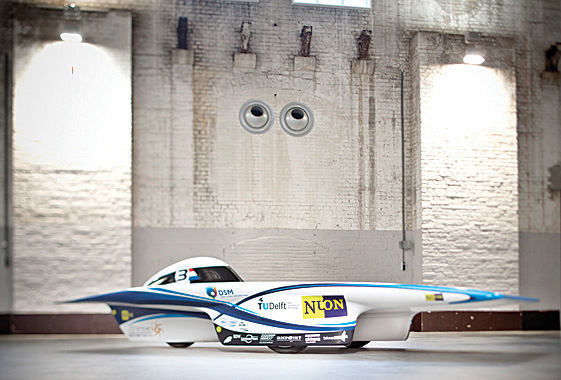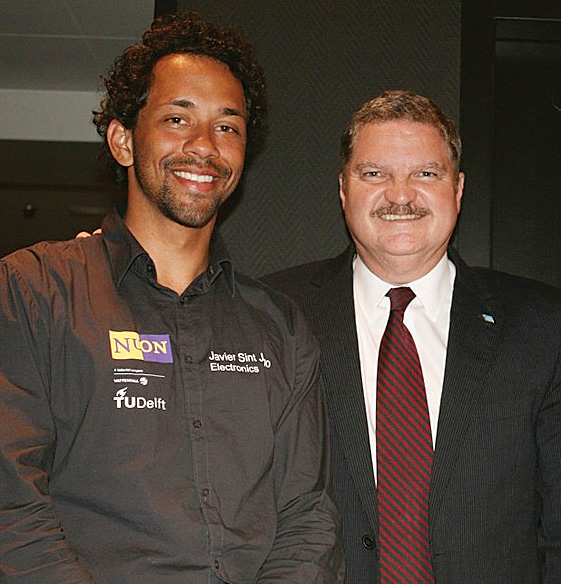courtesy of: The Morning News
 Twenty five year old future engineer, Javier St. Jago, is a model for Aruban youth. Javier is a student at the prestigious TU Delft University where he is studying engineering. He is one of the members of the team of NUNA 6, and one of the three drivers who will sit in the NUNA6 to compete in the World Solar Challenge 2011 to be held in Australia on October 16th.
Twenty five year old future engineer, Javier St. Jago, is a model for Aruban youth. Javier is a student at the prestigious TU Delft University where he is studying engineering. He is one of the members of the team of NUNA 6, and one of the three drivers who will sit in the NUNA6 to compete in the World Solar Challenge 2011 to be held in Australia on October 16th.
Javier has been for years keenly interested in the Nuon project and is currently a member of the team working on improving NUNA 5. They were able to accomplish this last June when they placed both vehicles on the race way with the same amount of energy in the battery they used.
Every member of the team has a specific role, from the design of the vehicle to material used, up to the moment that the vehicle is placed on the road for the World Solar Challenge. Javier’s vehicle is specified to “power electronics.” He must ensure that the system sends solar energy directly to the engine and in the most efficient manner possible. He is also one of the three members who will sit behind the wheel for the race which will take place from Darwin to Stuart Highway to Adelaide. This is a distance of 3000km, which is 100 times the size of Aruba! Javier remarked…”we are practically ready after working intensively for one year, often working whole days and nights.”
 The vehicle that they designed is equal to NUNA 5 except for the maximum speed. NUNA 6 is 2m wide and somewhat longer than 4 meters. It has 6m2 of solar cells with which it can capture 1200 kilowatt hours of energy per day. They can store 5 kilowatt hours on a lithium battery which can be used during night hours.
The vehicle that they designed is equal to NUNA 5 except for the maximum speed. NUNA 6 is 2m wide and somewhat longer than 4 meters. It has 6m2 of solar cells with which it can capture 1200 kilowatt hours of energy per day. They can store 5 kilowatt hours on a lithium battery which can be used during night hours.
The competition is scheduled to begin October 16th at Darwin. They will start at 8 am. Their goal will be to get as far as possible by 5 in the afternoon. At 5 pm they will mark the road where they arrived and on the side of the road they will raise a tent for their night abode. The next day at 8 am they will continue their travels.
The group is traveling by plane to Australia, while NUNA 6 will be transported by plane and on the last part of the journey will be transferred to a cargo ship. The team is expected to arrive early in Australia where they will test the drive from start to finish so they could analyze the entire route. This will give them per-knowledge of where there may be potholes and curves in the road. These they will register in their computer so the drivers would be well aware of them.
According to Javier…”if you want to achieve something, you must believe in yourself for you to achieve it. Set your goal and go for it; put all your energy into what you want to do.”